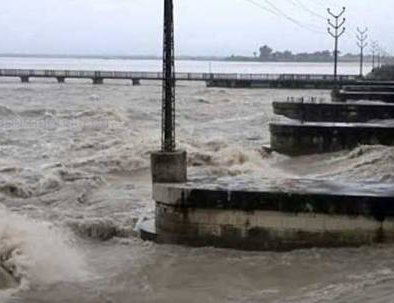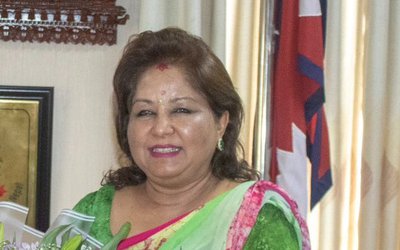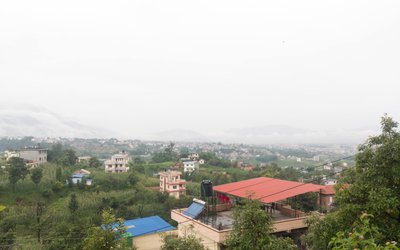
Nepal’s major storage dam projects are among the largest projects in the world. Our highest political establishment must know every important aspect of each such project. We should always ensure that our own wrong action would not put in jeopardy our full right to water of our river.
Unfortunately we signed in 1959 Gandak river treaty that would have totally deprived forever our country’s right to use water of Gandak as well as her tributaries. Fortunately the 1959 Gandak treaty was revised in 1964 restoring many of our lost water rights.
Our Great Success
Our biggest success in dealing with India is the revision of the Kosi Treaty in 1966. The 1966 Revised Kosi Treaty has granted our country absolute right to use entire Sun-Kosi and Kosi river waters for coming 199 years without prejudice to existing (Hanumannagar Kosi barrage project) as well as future uses in India. In the absence of 1966 Kosi Treaty revision the implementation of Sun-Kosi river diversion project would have been unthinkable. It is quite frustrating that some of our technical as well as legal experts still fail to understand the significance of 1966 Kosi Treaty revision. Our intelligentsia must not let happen that due to our own fault the 1966 Revised Kosi Treaty is scrapped.
Multipurpose Use of Kosi
In course of first official visit of our then Prime-minister G.P. Koirala to India an agreement was signed to conduct jointly detailed feasibility study of the Kosi High Dam Project primarily aimed at generation of electricity. This type of isolated study of the Kosi dam project could be detrimental to the interest of our country since Sun-kosi project and Kosi dam project will be mutually exclusive of one another if the Sun-Kosi Project is not implemented first. Kosi navigation project is also extremely important project for landlocked Nepal which can be directly tied up with the Kosi Dam Project. The flood control is the most important aspect of the Kosi storage dam project to save the life and property of millions in Nepal and India.
I raised above issues within the Ministry of Water Resources displeasing many of my colleagues, who regarded that an agreement already signed between two prime-ministers should not be questioned.
Kosi Canal Navigation and Flood Control
I prepared based on my own personal experience a new plan for the Kosi river development that could be put to the Indo-Nepal joint meeting. The proposed plan has been presented in two reports (Ref-1, Ref-2). Those reports had been circulated to various concerned agencies. Similarly important findings of those reports have been published in several local newspapers and magazines. The following three new issues have been dealt with in my reports.
(a) Sun-Kosi dam project and Kosi dam project would be mutually exclusive of one another if the Kosi dam project would be built first. Thus the Sun-Kosi dam project would have to be implemented first which would provide year round irrigation to all Terai districts of Nepal between Kosi River and Chitwan in addition to generation of abundant cheap electricity. There is already sufficient market in Nepal for full utilization of the Sun-Kosi project generated energy.
(b) Use of Kosi irrigation canal for additional power generation and inland navigation. A similar example is the use of Upper Rhein canal for power generation as well as navigation that provided landlocked Switzerland waterway access to seaport.
(C) Flood control role of Kosi storage dam project (though India was denying the necessity of Kosi storage Dam for flood control but during discussion they accepted our view).
Sorrow of China and Sorrow of Bihar
In an article published on October 16, 1998 in " China Daily" on Yellow River known in the past as " Sorrow of China" Xiong Lei has written " A Cradle and a killer, a mother and a menace. From time immemorial, China has both depended on and dreaded its mighty rivers." It is reported that during 1887 and 1931Yellow River maximum floods when the Yellow River embankments were breached, the death toll each time was over one million, and similarly in 1938 flood the death toll was about half million.
Unlike Yellow River which has now been completely regulated after the implementation of storage dam projects, the mother Kosi also known as “Sorrow of Bihar” can still be a merciless killer. According to Dr. K.L. Rao, former Minister of Govt. of India the maximum flood discharge of the Yellow River is similar to Kosi River. Like the elevated Yellow River bed at the times of disastrous floods, the Kosi river bed too particularly on a stretch of the river upstream barrage is already well above the surrounding lands. In the past both these rivers have exhibited similar characteristic of completely shifting their course during high floods. Needless to explain that the loss of life and property would be astronomical in scale if the very recent widespread submergence particularly in north east Bihar would have been simultaneous accompanied by breach of Kosi left bank embankment triggered by maximum flood discharge of about nine lack cusecs ( a discharge already recorded twice during the last 50 years).
Conclusion of 1997 Indo-Nepal Joint Meeting
We were easily able to convince the Indian delegates our view points on Kosi development. The Indo-Nepal joint meeting completely endorsed our proposal as described in my two reports. However, nobody was expecting that Indo-Nepal joint meeting could so easily reach an agreement about the thorny Kosi river issue. People had good reason to suspect that Nepal’s interest might have been compromised
Gradually people started to realize that the Kosi study agreement was in conformity to our country’s long term development need. MITRAKUNJ helped to organize a meeting in Russian Cultural Centre attended by relevant experts, politicians, media persons distinguished in the field of water resources. Kosi problems were explained in the meeting. Those attending the meeting realized the significance of the Kosi study agreement. The following day all papers covered positively Kosi news.
REFERENCE - (1) Planning Kosi High Dam Project, Thapa AB 1993; (2) Kosi Canal Waterway, Thapa AB 1993

Dr. A.B. Thapa
Thapa writes on water resources issue
- Dudhkosi Multipurpose Project
- Jul 11, 2022
- Dudh-Kosi Power Project And Kosi Treaty
- Sep 27, 2021
- Uttarakhand Glaciers And Recent Disaster: A Lesson To Our Country
- Mar 02, 2021
- Multipurpose Langtang After Melamchi: Inter-Basin Water Transfer
- Nov 04, 2020
- Large Storage Dams Projects Wary of Giving Away Children’s Inheritance
- Dec 22, 2019
















